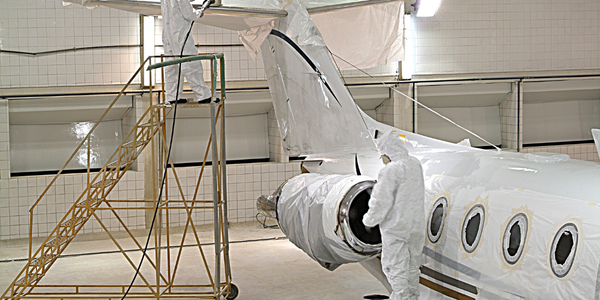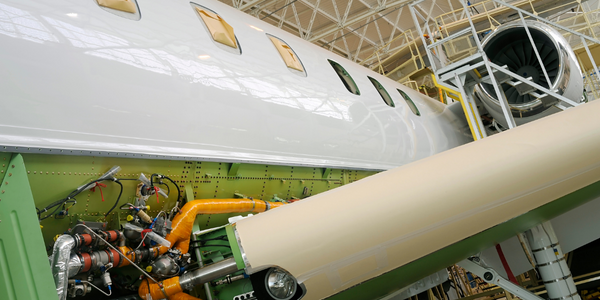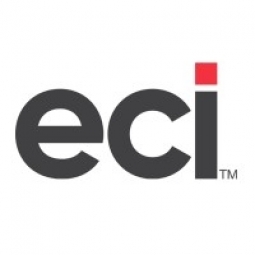Customer Company Size
Startup
Region
- America
Country
- United States
Product
- E2 Shop System
- E2's RDS module (Rapid Documentation System)
Implementation Scale
- Enterprise-wide Deployment
Impact Metrics
- Productivity Improvements
- Brand Awareness
Technology Category
- Functional Applications - Enterprise Resource Planning Systems (ERP)
Applicable Industries
- Aerospace
Applicable Functions
- Discrete Manufacturing
Use Cases
- Inventory Management
Services
- Software Design & Engineering Services
- System Integration
About The Customer
Endeavor Precision is a start-up company based in the United States. The company, owned and led by President Dave Langenkamp, specializes in contract EDM (electrical discharge machining) hole drilling. Endeavor Precision primarily serves the aerospace industry, making it one of the few companies in the United States to offer this specialized service. The company was established in January 2018 and by May of the same year, it was already considering ways to streamline its operations and achieve industry certifications.
The Challenge
Endeavor Precision, a start-up company specializing in contract EDM (electrical discharge machining) hole drilling for the aerospace industry, faced the challenge of becoming AS9100 and NADCAP certified. The complexity of the certification process led the company's president, Dave Langenkamp, to consider either hiring a consultant or investing in software to assist with the certification. The company was also dealing with scattered information across Excel spreadsheets and other databases, which made it difficult to manage the business effectively.
The Solution
Endeavor Precision decided to invest in the E2 Shop System, a manufacturing software product, to assist with the certification process and to integrate all business operations into one system. The E2 Shop System's Rapid Documentation System (RDS) module enabled the company to prepare for the audit quickly. The module provided prewritten procedures, completed documents, process maps, and forms, requiring only minor customization. The company also utilized the expertise of E2's support team, including a Certified Quality Management Systems Auditor, to assist with the certification process.
Operational Impact
Quantitative Benefit

Case Study missing?
Start adding your own!
Register with your work email and create a new case study profile for your business.
Related Case Studies.

Case Study
Airbus Soars with Wearable Technology
Building an Airbus aircraft involves complex manufacturing processes consisting of thousands of moving parts. Speed and accuracy are critical to business and competitive advantage. Improvements in both would have high impact on Airbus’ bottom line. Airbus wanted to help operators reduce the complexity of assembling cabin seats and decrease the time required to complete this task.

Case Study
Aircraft Predictive Maintenance and Workflow Optimization
First, aircraft manufacturer have trouble monitoring the health of aircraft systems with health prognostics and deliver predictive maintenance insights. Second, aircraft manufacturer wants a solution that can provide an in-context advisory and align job assignments to match technician experience and expertise.

Case Study
Aerospace & Defense Case Study Airbus
For the development of its new wide-body aircraft, Airbus needed to ensure quality and consistency across all internal and external stakeholders. Airbus had many challenges including a very aggressive development schedule and the need to ramp up production quickly to satisfy their delivery commitments. The lack of communication extended design time and introduced errors that drove up costs.

Case Study
Accelerate Production for Spirit AeroSystems
The manufacture and assembly of massive fuselage assemblies and other large structures generates a river of data. In fact, the bill of materials for a single fuselage alone can be millions of rows of data. In-house production processes and testing, as well as other manufacturers and customers created data flows that overwhelmed previous processes and information systems. Spirit’s customer base had grown substantially since their 2005 divestiture from Boeing, resulting in a $41 billion backlog of orders to fill. To address this backlog, meet increased customer demands and minimize additional capital investment, the company needed a way to improve throughput in the existing operational footprint. Spirit had a requirement from customers to increase fuselage production by 30%. To accomplish this goal, Spirit needed real-time information on its value chain and workflow. However, the two terabytes of data being pulled from their SAP ECC was unmanageable and overloaded their business warehouse. It had become time-consuming and difficult to pull aggregate data, disaggregate it for the needed information and then reassemble to create a report. During the 6-8 hours it took to build a report, another work shift (they run three per day) would have already taken place, thus the report content was out-of-date before it was ever delivered. As a result, supervisors often had to rely on manual efforts to provide charts, reports and analysis.

Case Study
Developing Smart Tools for the Airbus Factory
Manufacturing and assembly of aircraft, which involves tens of thousands of steps that must be followed by the operators, and a single mistake in the process could cost hundreds of thousands of dollars to fix, makes the room for error very small.








